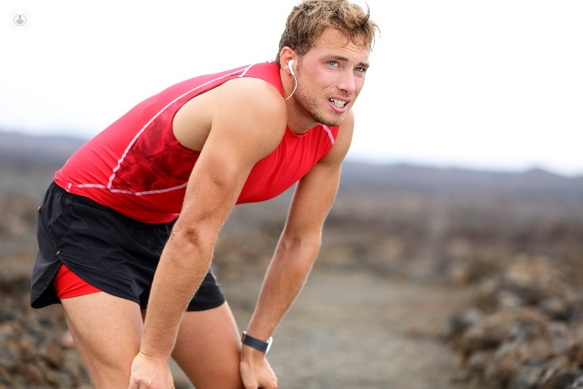Hip impingement what is it
Autore:You can have hip impingement for years and not know it, and if you are a runner, cyclist or even a CrossFit enthusiast, you are at a high risk of developing hip impingement and having hip problems later down the line. We asked orthopaedic surgeon, Mr Rishi Chana to explain more about this condition and how we can prevent it from developing into worse conditions like arthritis.

What is hip impingement?
The hip joint is a natural ball-and-socket joint that is lined by a seal called the labrum. The ball of the joint is called the femoral head and the socket is the acetabulum and functions much like a perfect sphere spinning in a half-cup.
Usually, the ball glides smoothly within the socket, but sometimes problems with the ball and socket can interfere with the motion. For example, when the ball or the socket is not perfectly round and is instead more egg-shaped or oblong, it causes jarring and injury due to the mismatch in shape.
Why does this happen?
As we grow, the growth plate (areas of growing tissue at the end of our bones) reacts to stress and starts producing extra bone. This stress causes the ball of the joint to become more egg-shaped, medically known as a cam lesion. The socket then can become more oblong (pincer lesion) which causes the ball to jam in the socket during motion.
How common is hip impingement?
Around 1 in 20 people are affected by this condition but most people don’t even know they have this due to only minor changes in the hip joint. Both men and women can develop hip impingement, although, men tend to have bumps and women experience socket changes.
When does it occur and what does it feel like?
There are typically two peaks across our life where hip impingement might occur. This includes the mid-twenties when we are very active, or in our mid-forties when late damage starts to occur.
The main symptoms include:
- general hip pain
- pain when you move your hip near its limits
- reduced range of motion
- a dull toothache pain during or after the activity
- sharp pain within the front and outside groin/pelvis areas (sometimes there is a clicking sensation or stiffness)
Pain can be caused by deep flexion and rotation movement, such as putting on shoes or socks and getting in and out of a car. Many sports and fitness activities can also cause this if the level of activity crosses a threshold where damage and pain start to occur. Even sitting or driving for a long time can contribute to the onset of hip impingement.
Who is at a high risk of developing hip impingement?
Runners, cyclists, triathletes or CrossFit enthusiasts are particularly at risk due to the nature of the extreme range of motion and high, repetitive impact actions.
People who take part in regular walking, sports and fitness activities that experience hip injuries are also found to have weak core gluteal muscles and suffer trochanteric bursitis. This can often be underestimated and contribute to the development of hip impingement.
If I experience pain, what should I do?
It is advised that you book a consultation with a health expert so they can investigate it. An early professional holistic assessment will lead to a timely diagnosis and correct treatment so you can get back on your feet and to full activity sooner rather than later.
What treatment options do I have?
Getting the correct diagnosis is key as the earlier the condition is treated, the better. If hip impingement is left untreated, it can progress to early-onset osteoarthritis and which may require a total hip replacement later down the line.
Once you see an expert, they will perform an x-ray and MRI scan to confirm that you have this condition.
Physiotherapy does help and usually gets patients back to around 66% function but if the bone is abnormally shaped, then keyhole surgery to shave it off and repair any cartilage damage to the hip joint is recommended.
Newer treatments are now available which repair the cartilage and save the natural hip joint allowing faster recovery of a few weeks rather than months. This is called biological reconstruction hip arthroscopy and has shown great results for pain relief and return to 96-99% of function.
If you believe you are suffering any of the symptoms mentioned in this article, visit Mr Rishi Chana’s Top Doctors profile and book a consultation with him. He currently practices at the following hospitals and clinics:
- Spire Thames Valley Hospital
- BMI The Princess Margaret Hospital
- BMI The Chiltern Hospital
- Schoen Clinic London Ltd.


